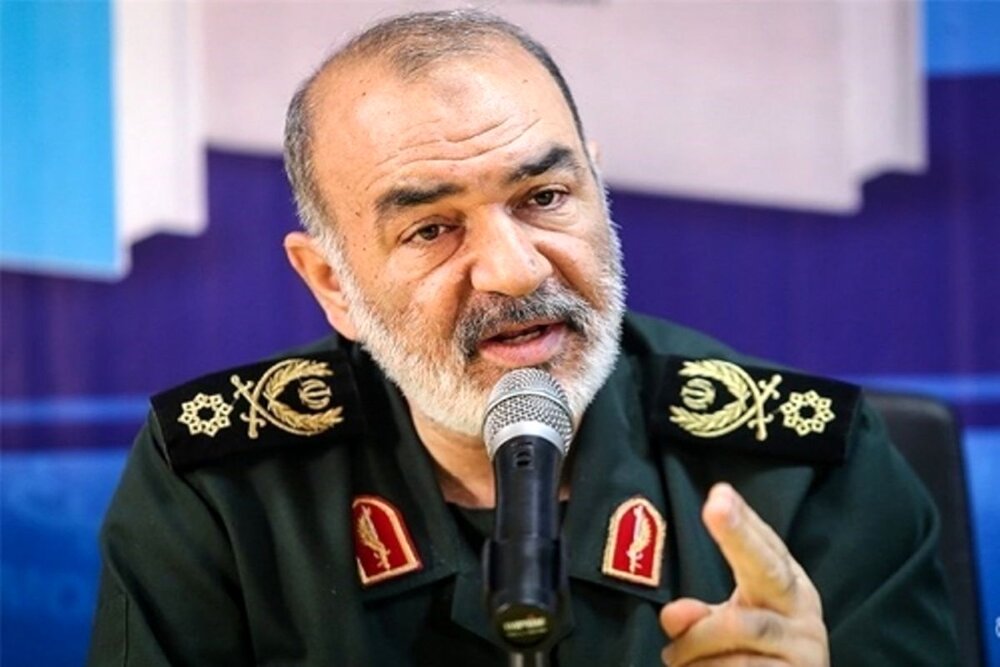Speaking on the sideline of an IRGC military exercise on the border with the South Caucasus region, General Salami said Saudi Arabia is playing media games with the Iranian youth. “We are warning them in this regard,” he said, according to state news agency IRNA.
“They are openly seeking to provoke our youth. We advise them to exert control over these media outlets. Otherwise, they will pay the price,” he said.
General Salami then directly addressed the Saudis and said, “Note that you have entered this field and know that you are vulnerable. You better be careful.”
Over the last weeks, Iran has been grappling with a wave of unrest that many Iranian officials blamed on foreign Persian-speaking media, including Iran International, a London-based news channel that Iran says is funded by Saudi Arabia.
MP calls for complaint against countries waging media war against IranOn Monday, an Iranian lawmaker called on the Iranian foreign ministry to file a legal complaint against countries owning media outlets against Iran, especially Saudi Arabia.
The lawmaker, Seyed Mahmoud Nabavian, told Fars News that the Iranian foreign ministry should file a legal complaint against countries that waged a media war against Iran, especially Saudi Arabia.
Nabavian told Fars News that it is necessary to surveil cyberspace. He stressed that given the duty of the people's representatives to defend their rights in this space, it is necessary to stand up to false news.
The lawmaker described the news that is being published in cyberspace as distorting public opinion and causing physical and financial harm to many people.
The keys to cyberspace must be in the hands of the Iranian people and they should follow the path they deem right in this space, Nabavian said.
He stressed that the Iranian people want their security in the aforementioned space, but what is being promoted in this space at the present time is incitement to violence, spreading false news, sacrilege to beliefs and values, and foundations of families.
Nabavian described what is happening in the virtual space as launching a global war against the Iranian people, and stressed that the tolerance shown by Iranian officials in deleting the image of the martyr Soleimani in this space means that the key to the mentioned space is completely in the hands of foreigners.
Nabavian also called on the Iranian foreign ministry to file a legal complaint against countries that waged a media war against Iran, especially Saudi Arabia.
Over the last few weeks, the Islamic Republic has faced a fierce cyber war that was waged from outside the country but has taken a toll on some ordinary Iranians.
The Islamic Republic has been subject to a cognitive cyber war that is unprecedented in terms of creating perceptions of downfall in a stable country where people continue to live their normal lives. The venue for this war is social media which has been abuzz with footage and videos purportedly showing that the Islamic Republic is on the verge of collapse, if not already cracked up.
According to a recent study by Stanford Internet Observatory, the U.S. has run social media campaigns targeting Iran, China, and Russia with the aim of influencing public opinion in these countries and promoting pro-Western narratives on social media platforms.
“These campaigns consistently advanced narratives promoting the interests of the United States and its allies while opposing countries including Russia, China, and Iran,” the study said. “We believe this activity represents the most extensive case of covert pro-Western influence operations on social media to be reviewed and analyzed by open-source researchers to date. With few exceptions, the study of modern influence operations has overwhelmingly focused on activity linked to… Russia, China, and Iran.”
In July and August 2022, Twitter and Meta
removed two overlapping sets of accounts for violating their platforms’
terms of service. Twitter said the accounts fell foul of its policies on
“platform manipulation and spam,” while Meta said the assets on its
platforms engaged in “coordinated inauthentic behavior.” After taking
down the assets, both platforms provided portions of the activity to
Graphika and the Stanford Internet Observatory for further analysis.
/129

